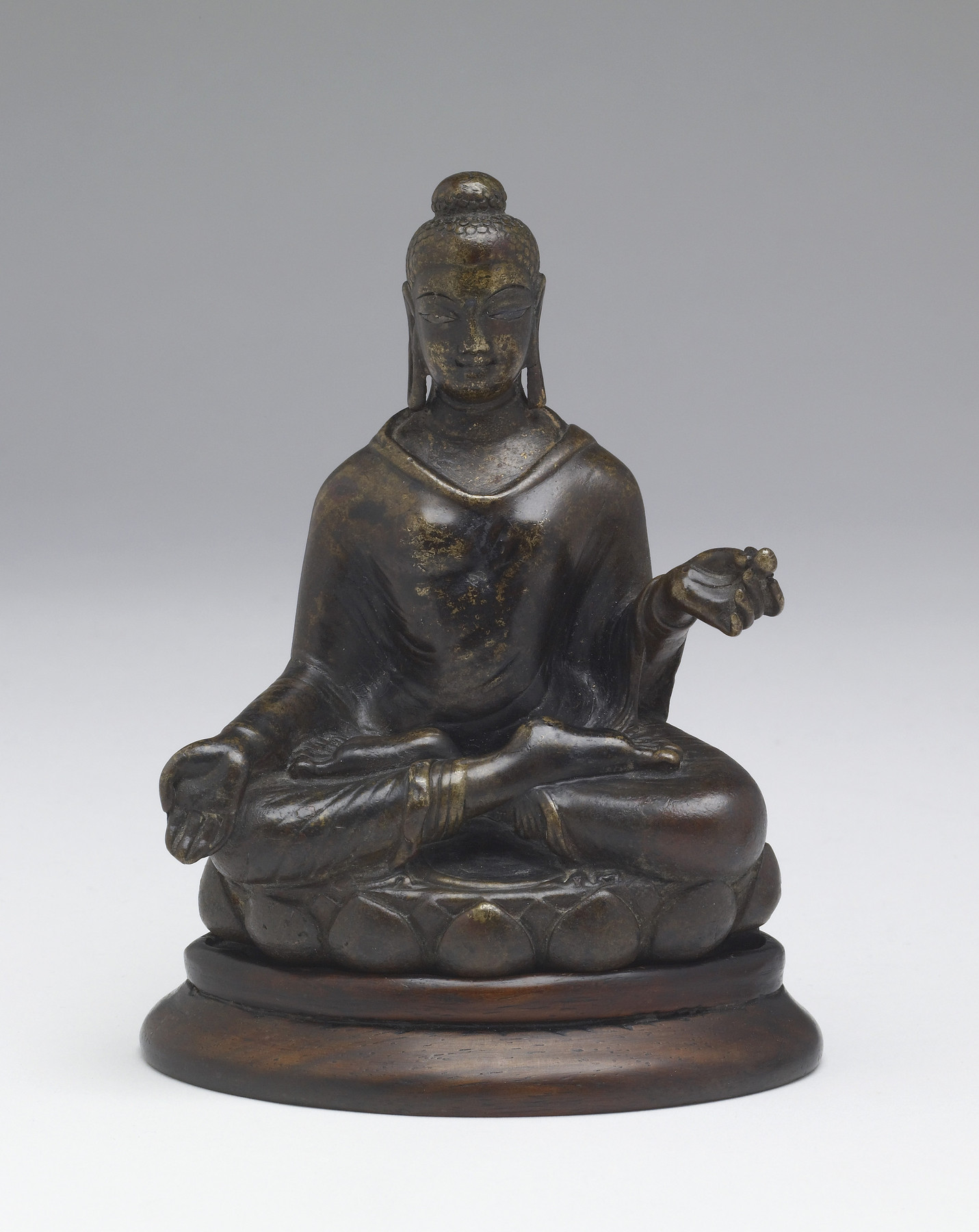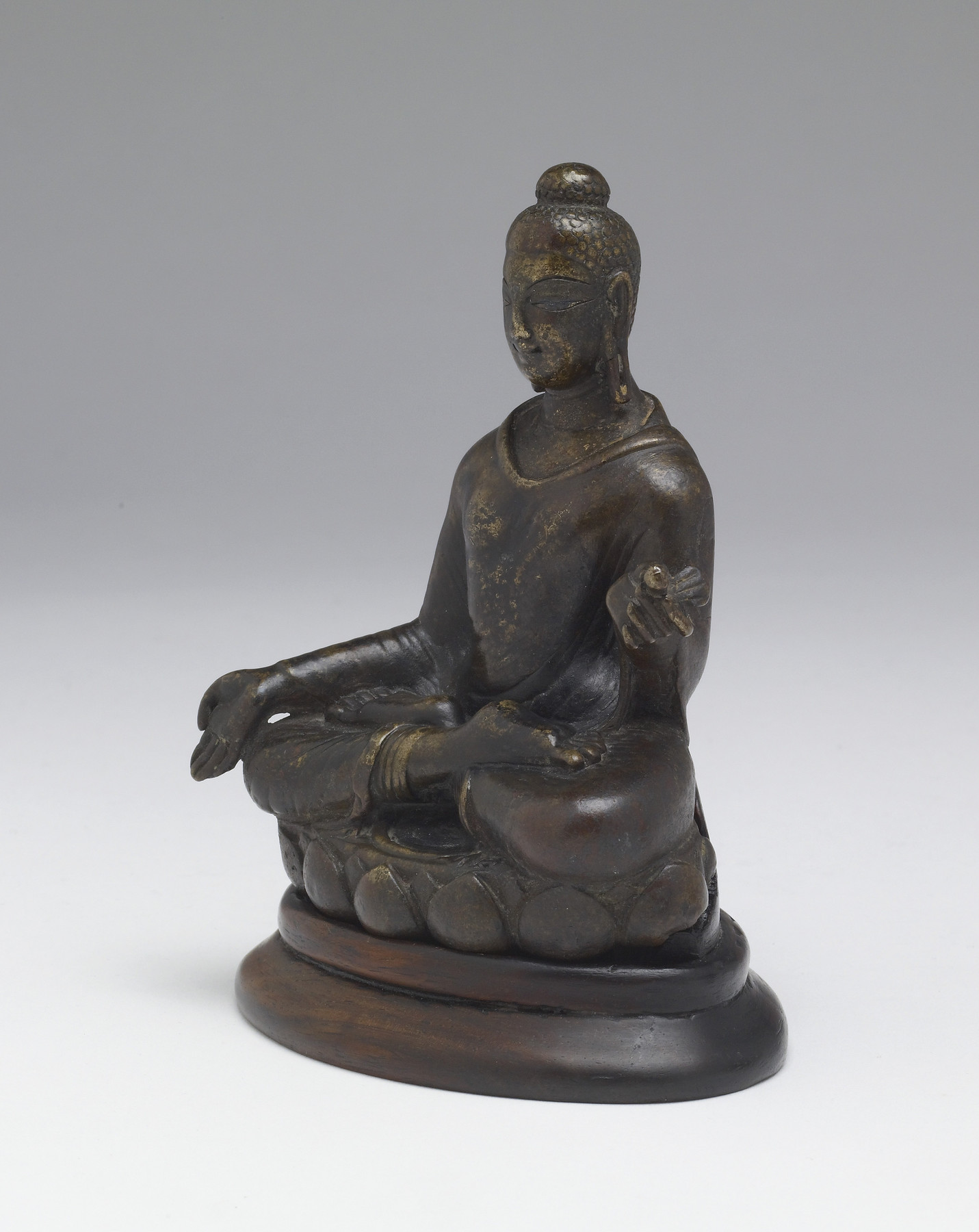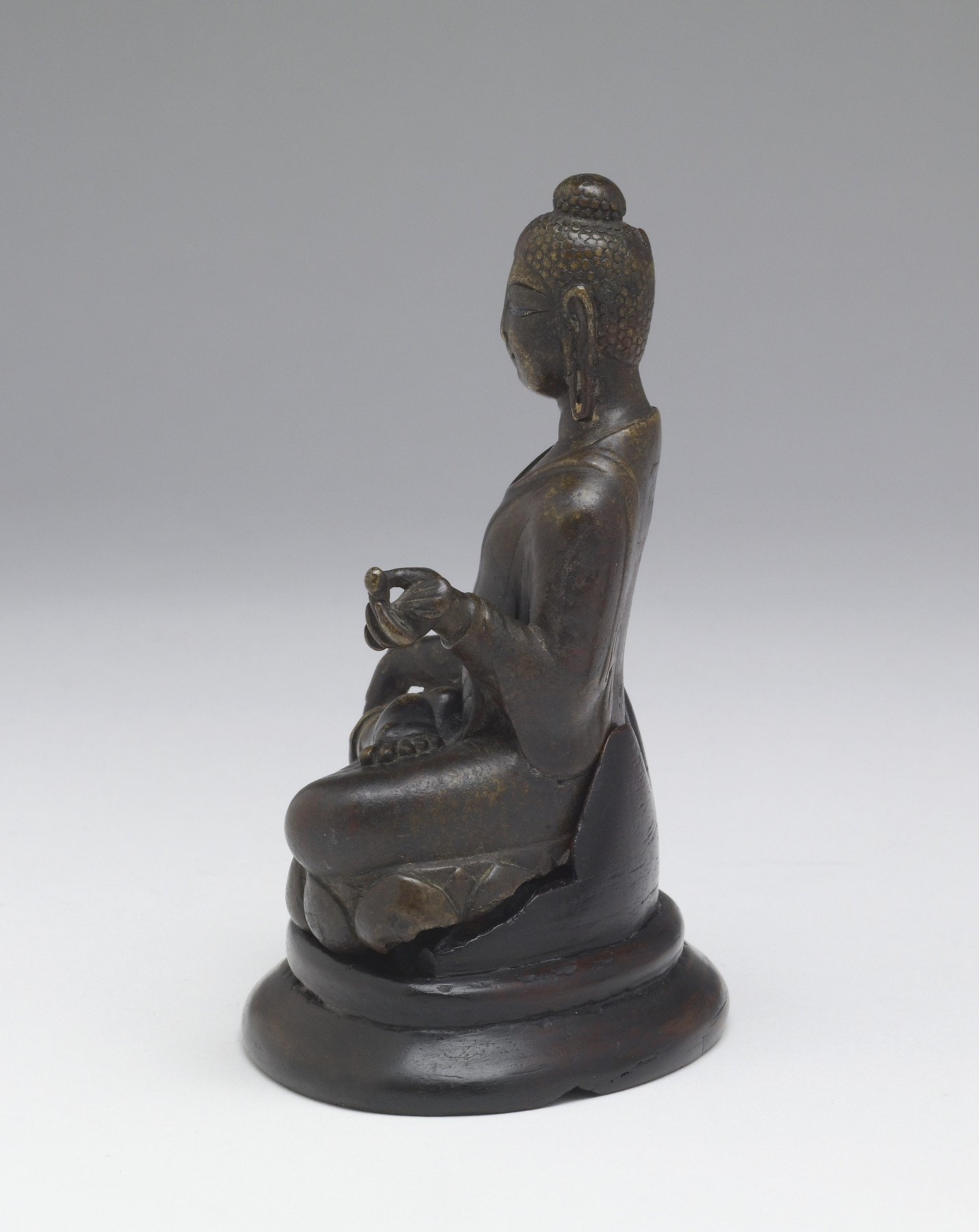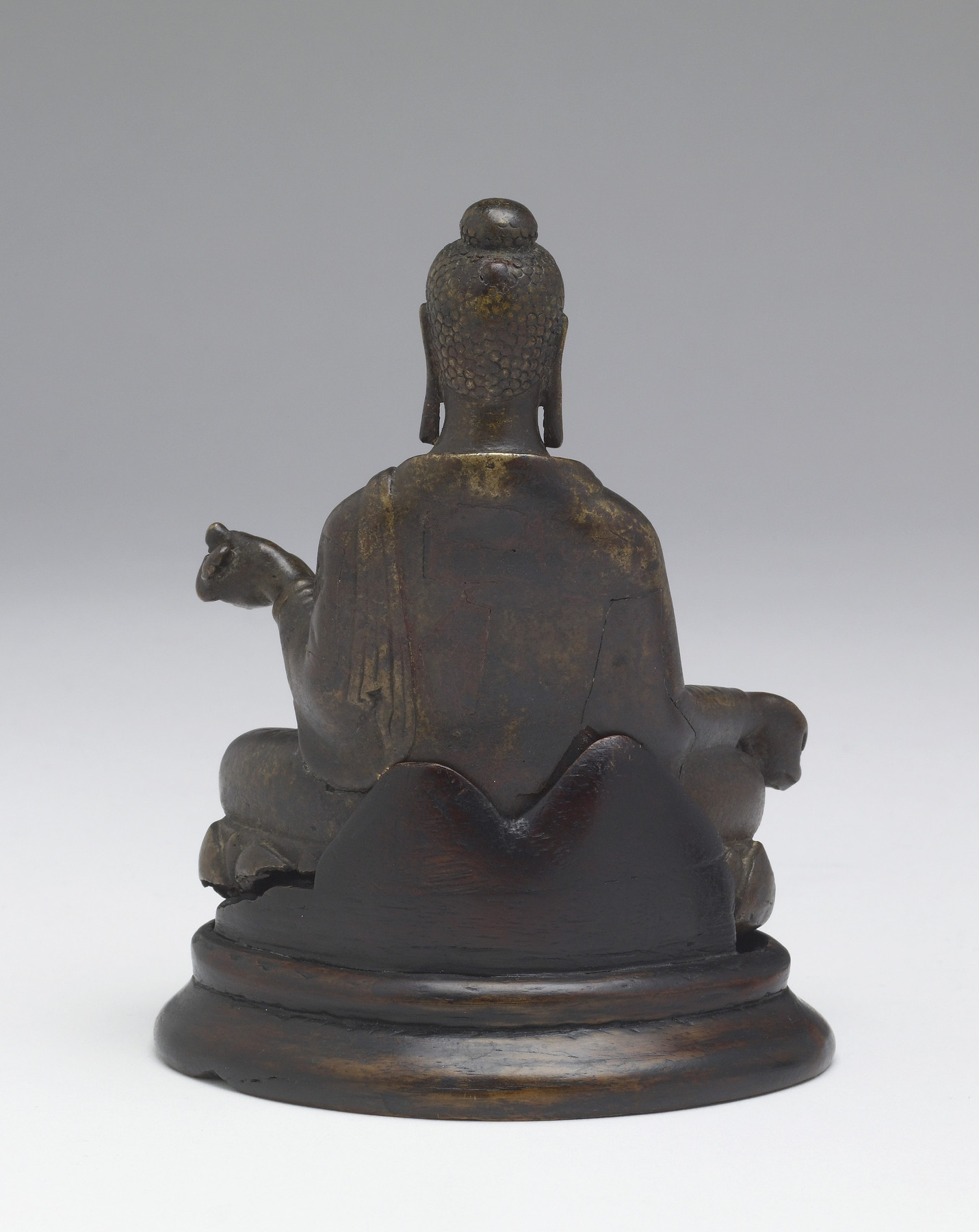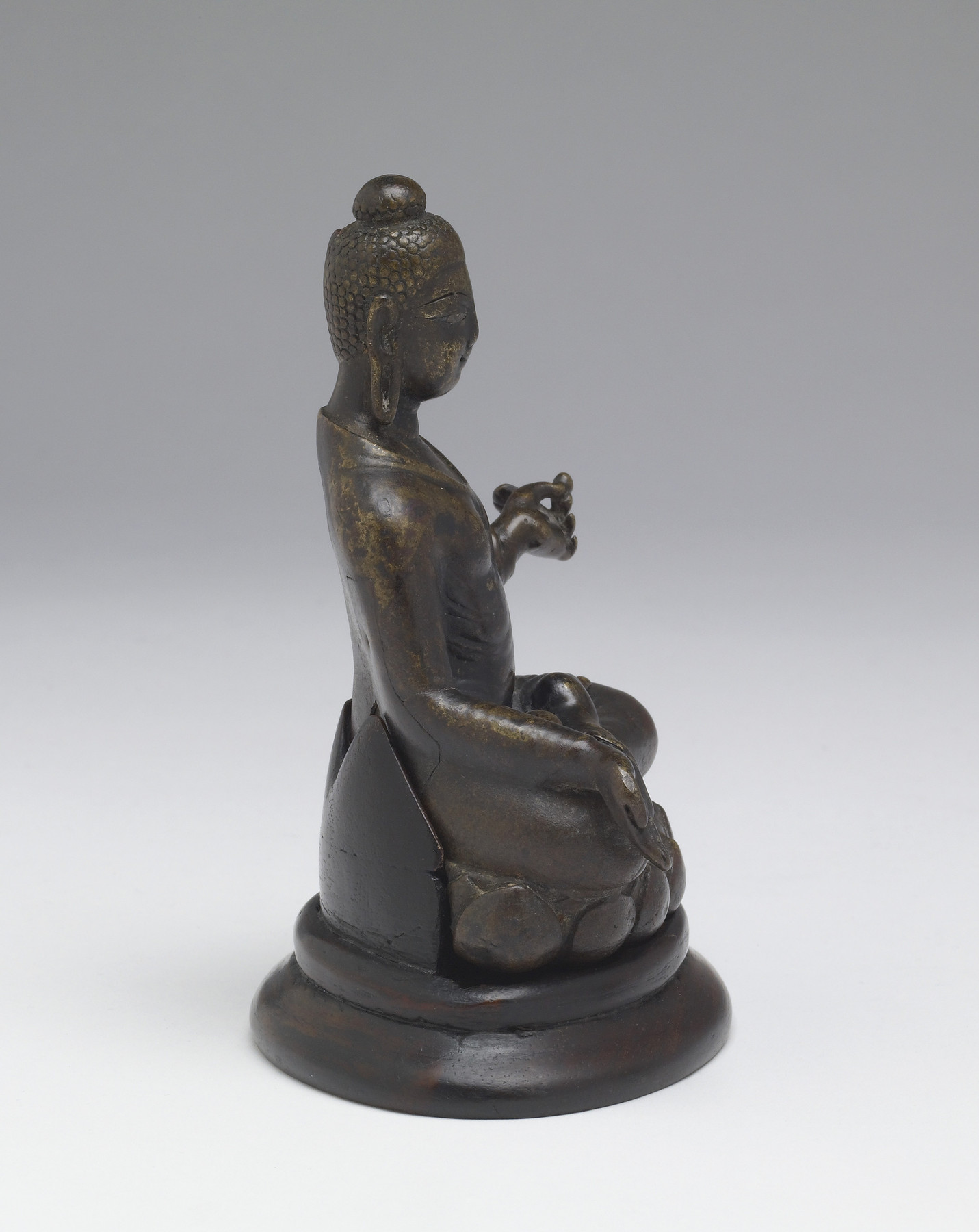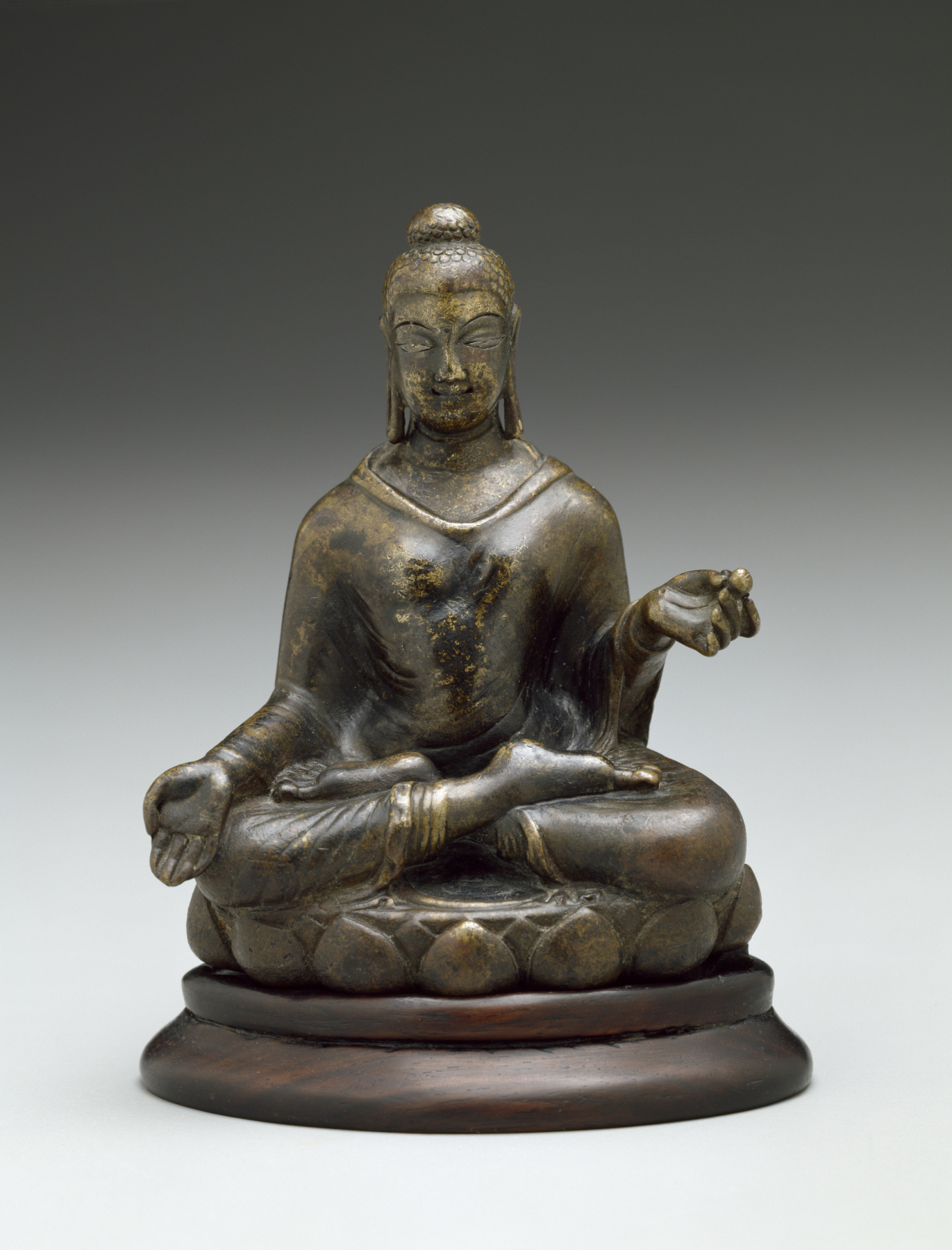Buddha
(India, Nepal, and Tibet)
In regions where the Gandharan style had earlier been dominant and where Buddhism remained vital, fresh influences from the south brought stylistic changes. Gandharan stylistic elements, such as the folds of the Buddha's robe, became less important than the creation of a body with rounded volumes. This Buddha may not be Shakyamuni but one of the cosmic Buddhas, Ratnasambhava, associated with the south.
Provenance
Provenance (from the French provenir, 'to come from/forth') is the chronology of the ownership, custody, or location of a historical object. Learn more about provenance at the Walters.
Thomas Downes, Washington, D.C. [date and mode of acquisition unknown]; John and Berthe Ford, Baltimore, May 15, 1968, by purchase; Walters Art Museum, 2006, by gift.
Exhibitions
| 2001-2003 | Desire and Devotion: Art from India, Nepal, and Tibet in the John and Berthe Ford Collection. The Walters Art Museum, Baltimore; Santa Barbara Museum of Art, Santa Barbara; Albuquerque Museum, Albuquerque; Birmingham Museum of Art, Birmingham; Hong Kong Museum of Art, Hong Kong. |
Geographies
India, Kashmir
(Place of Origin)
Pakistan, Swat Valley (Place of Origin)
Measurements
with base H: 5 3/8 × W: 4 1/8 × D: 2 15/16 in. (13.6 × 10.5 × 7.5 cm)
Credit Line
Gift of John and Berthe Ford, 2006
Location in Museum
Not on view
Accession Number
In libraries, galleries, museums, and archives, an accession number is a unique identifier assigned to each object in the collection.
In libraries, galleries, museums, and archives, an accession number is a unique identifier assigned to each object in the collection.
54.3025

